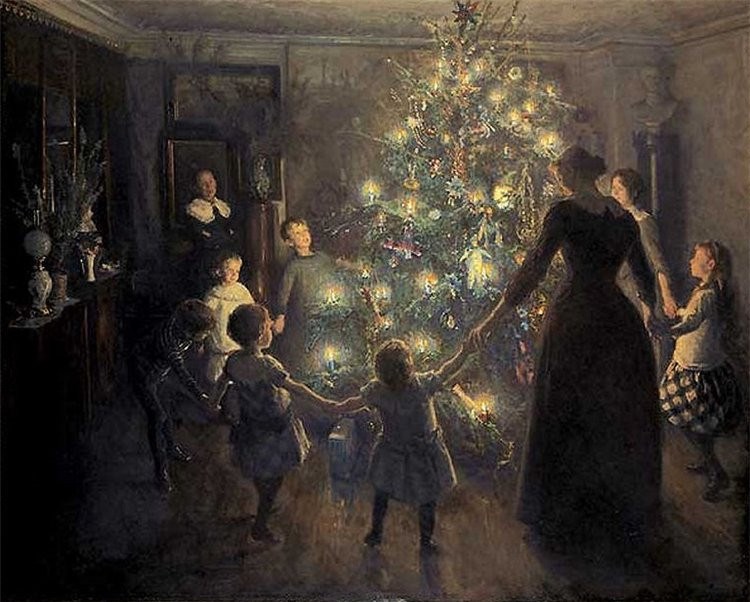Many Christmas customs still practised today are permeating through to our time from a pagan world, which was very different from ours. In their winter dwellings, rescuing greenery from the woodlands was believed to be a healing, protective and magical act.
In those far-off times, evergreen branches displayed within warm walls were seen as a safe place for wood spirits to spend cold, dark winters. They were also living symbols of their hope that spring would return.
It was also practical. People were linked more closely to nature than we are today, and they well knew the value of trees for providing fruit and fuel for cooking fires. These folk knew their fates depended on the welfare of trees.
In those ancient days holly, ivy and mistletoe were considered healing and magical plants. Today, these are still shown on Christmas cards but not so often brought into homes in real life.
Although all three are extremely toxic they were apparently put to many medicinal uses including skin ailments (ivy) infertility (mistletoe) and energy-building teas (holly). The stimulating tea yerba mate is brewed from a tropical holly.
Their virtues also included protection against sorcery and evil spirits and, with ivy, protection of houses. Not entirely imagination: branches and trunks of ivy plants can grow very thick, and when my grandmother’s house “Ivy Cottage” was demolished the huge, old ivy plant turned out to be holding the walls together.
Then and now, cold weeks around the winter solstice were always a dark, depressing time – and the antidote was gatherings of family and friends where a fire provided warmth and much-needed light. Today our mood-brightener is Christmas lights.
In those past years there was homely fortune telling aimed at divining what fate had in store for the coming year, and happenings on that day were watched for omens. For instance, snow on Christmas day meant a green Easter.
Also in late December, the Romans had a lively time with a raucous winter festival carnival called the Saturnalia where green branches and flowers adorned halls where wine flowed, morals were suspended and masters played at being slaves while slaves became masters.
Then, as Christianity gained acceptance, pagan ways which proved uncommonly stubborn in the eyes of the church were gradually given much holier interpretations.
Dec. 25 became a joyous celebration of Christ’s birthday complete with rich and glorious stories of cattle kneeling, magi giving gifts and angels singing in the heavens.
The prickles of holly easily morphed into the crown of thorns and its red berries transmuted into blood that was spilled from the cross.
Mistletoe, a parasitic tree sacred to the Druids (and used in fertility rites) was always banned from churches. Ecclesiastical authorities maintained that it grew on the tree, which made the crucifixion cross.
Anne Marrison is happy to answer garden questions. Send them via [email protected]. Please include the name of your city or region.



